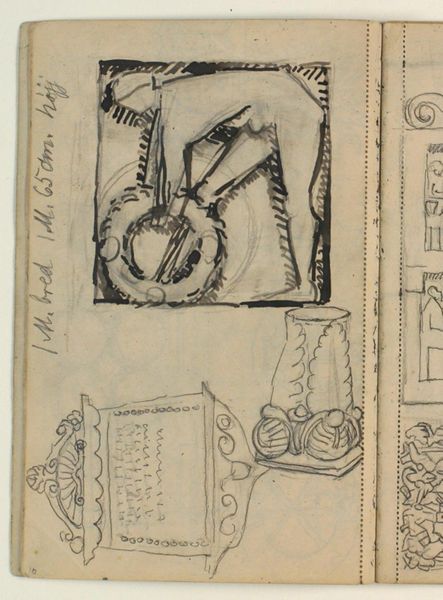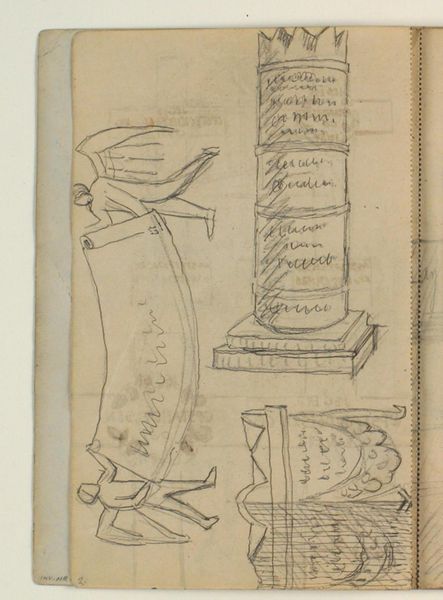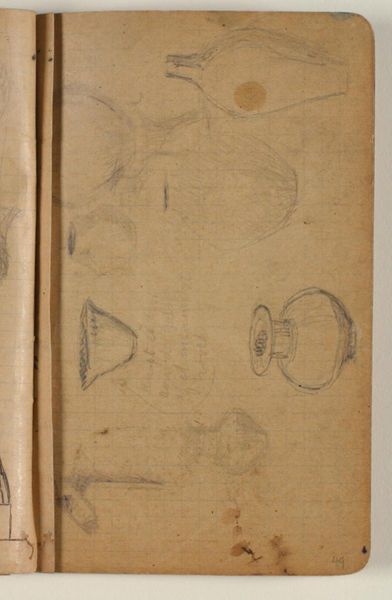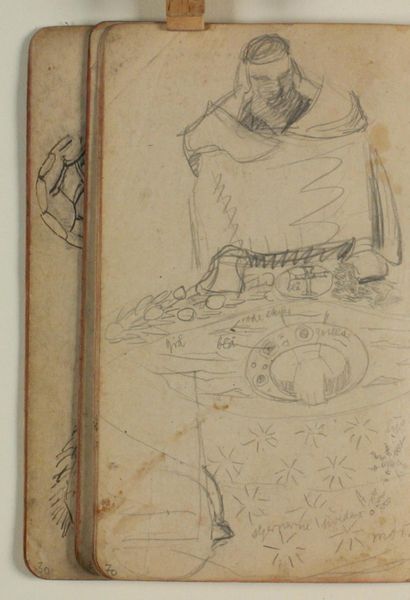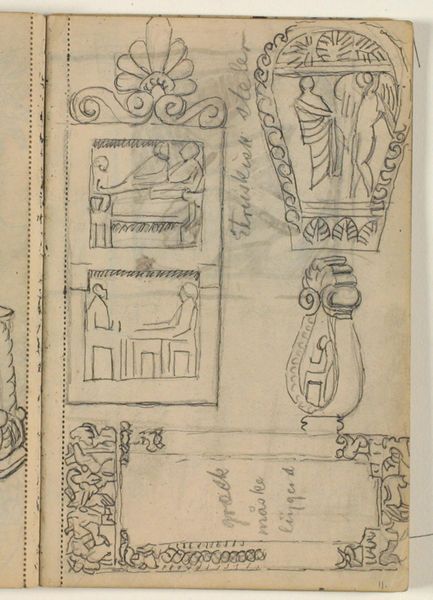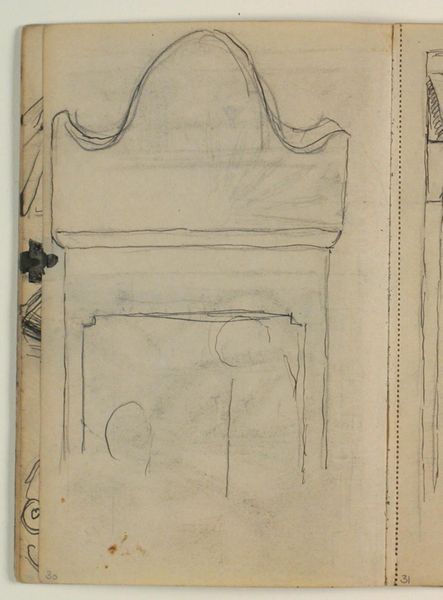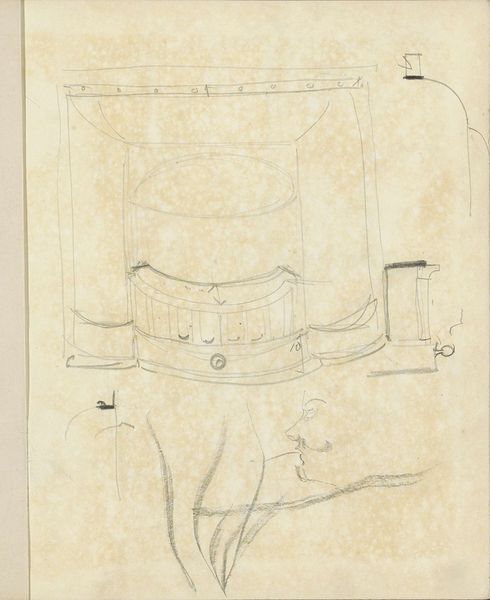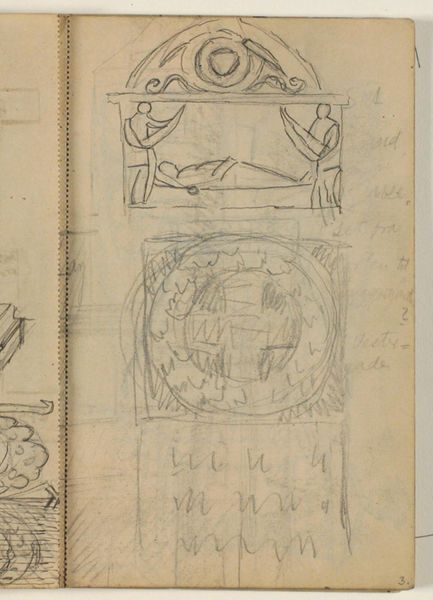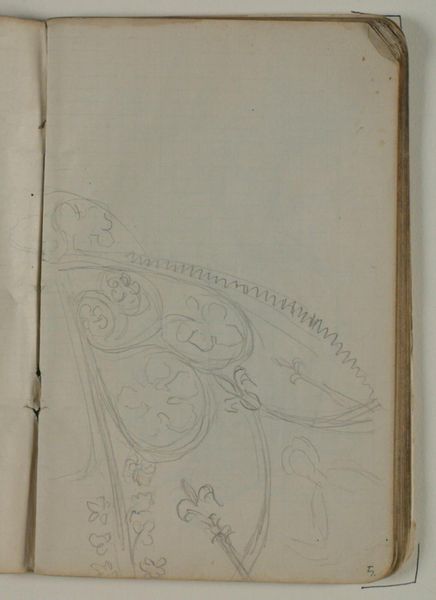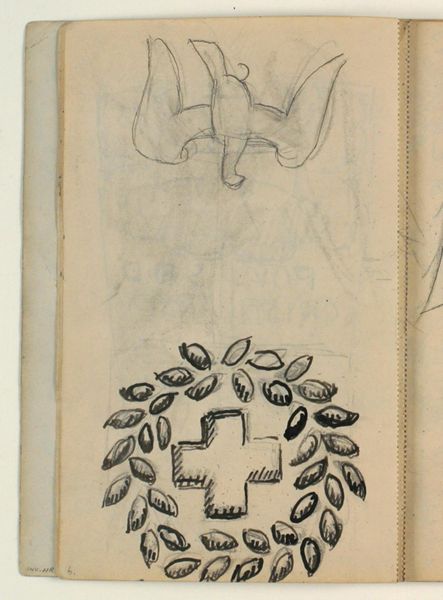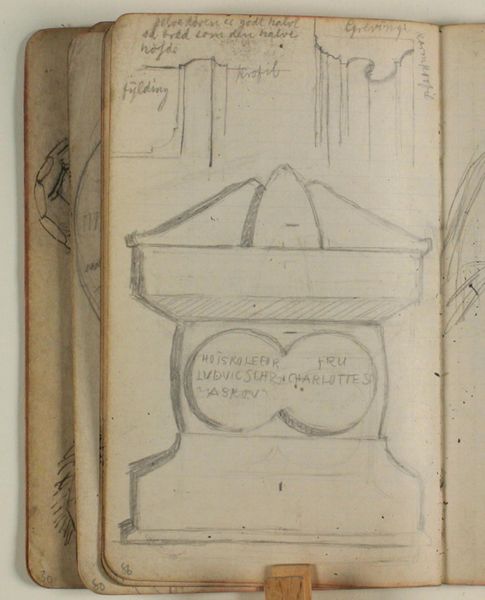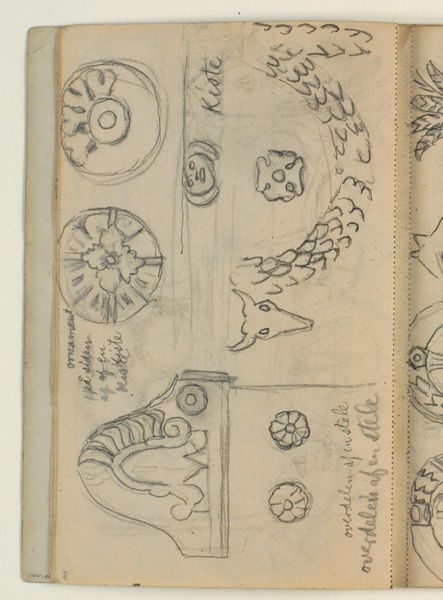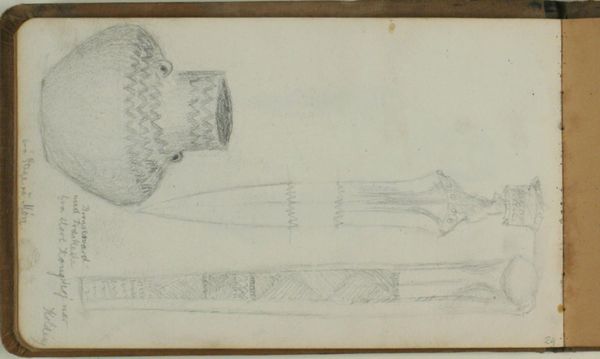
drawing, pencil, graphite
#
drawing
#
geometric
#
pencil
#
graphite
#
academic-art
Editor: This graphite and pencil drawing, "Studier efter gravmæler," or "Studies after Tombstones" by Niels Larsen Stevns, was made between 1932 and 1935. It seems like a preparatory sketch from the artist's notebook. What strikes me is how simplified these architectural elements are, almost like geometric forms. What do you see in this piece? Curator: Indeed. I see Stevns engaging with a long tradition of commemorating the dead, but also subtly questioning it. Consider the social context of the 1930s in Europe—rising nationalism, the looming specter of war. Gravestones are inherently tied to memory, to legacy. Stevns reduces them to geometric forms, potentially critiquing the monumentalizing tendencies of the time. Are these abstracted tombs symbols of forgotten lives, casualties of a brewing conflict? Editor: That's a powerful interpretation. I was so focused on the aesthetic simplicity that I overlooked the potential political commentary. The tombstone designs, though minimal, still carry cultural baggage. The shapes feel oddly familiar, like echoes of past power structures. Curator: Precisely. And whose stories are being told through these monuments, and whose are being erased or simplified? The artistic style also recalls a move toward abstraction as a reaction against academic art and possibly also a push against specific representation for all it implies. The use of pencil and graphite creates a sense of impermanence, perhaps alluding to the transient nature of power and memory. Does that resonate with you? Editor: It does, especially the idea of impermanence. The sketch-like quality emphasizes the provisional nature of these forms, making the viewer question the narratives they represent. Thanks, I am looking at this work in a new way. Curator: It’s been a pleasure to share in the experience, highlighting how historical context and critical theory can reveal complex social commentaries within seemingly simple artworks.
Comments
No comments
Be the first to comment and join the conversation on the ultimate creative platform.
